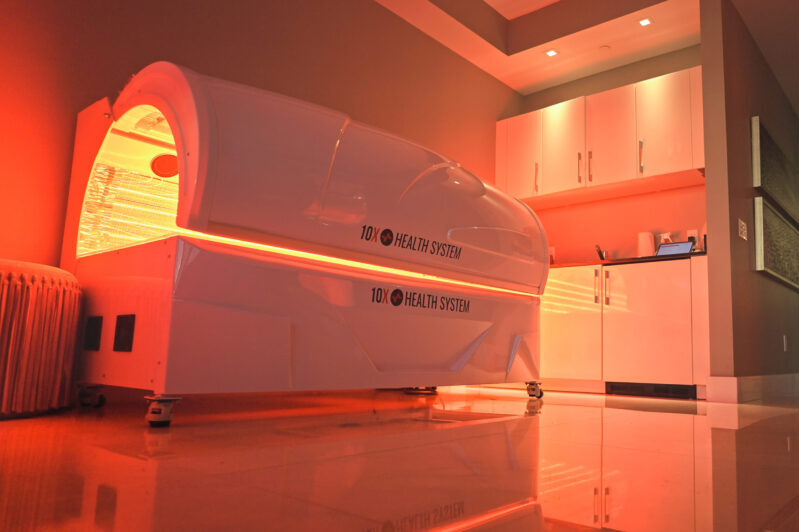Red Light Therapy (RLT) is a type of photomedicine, which is “the use of light to treat skin and other health conditions,” says Jared Jagdeo, MD, the founding director of the Center for Photomedicine at SUNY Downstate Health Sciences University in Brooklyn, New York.
RLT is also known as photobiomodulation (PBM), or previously known as Low-Level Laser Therapy (LLLT). All of these terms refer to the process of exposing the skin to low-wavelength red light to potentially enhance the look of your skin, boost new cell growth, improve performance in sports, and offer a host of other possible benefits.
Where did Red Light Therapy Come From?
Historically, light treatment has been used in both medical and physiotherapy practice. In ancient Greek, Egyptian, and Indian cultures, the idea of “light as therapy” was developed. These people believed that sunlight and fresh air could cure most maladies and restore health.
In the late 19th century, Dr. Niels Finsen began using ultraviolet (UV) light to treat scarring left behind on patients who had suffered tuberculosis and treating smallpox scarring with red light. Dr. Finsen won the Nobel Prize for Medicine for his use of light therapy to treat patients.
For most of the 20th century, light therapy was primarily used in hospitals and medical facilities, and not until the 1990s was light therapy ever really talked about. In the early 2000s, a resurgence in interest in light therapy began, bringing us to today where the mention of light therapy, specifically red light therapy (RLT), is a daily occurrence.
How Does Red Light Therapy Work?
Red light therapy is thought to work by acting on the “power plant” in your body’s cells called mitochondria. The light affects the mitochondria by generating ATP (energy) to promote healing. With more energy, other cells can do their work more efficiently, such as repairing skin, boosting new cell growth, and enhancing skin rejuvenation.
Aging, illness, or lifestyle factors can make the mitochondria produce less ATP. Red light therapy triggers a reaction that helps reverse this decline.
Red light therapy uses light in the red or near-infrared region because this wavelength range best penetrates through tissue. It is more easily absorbed by the parts of cells that capture light energy.
What Are the Benefits of Red Light Therapy?
RLT is non-invasive, non-toxic, and safe to use on all skin types and tones. There are no side effects to using RLT and no harsh UV light is used in the therapy. There are many possible benefits for your body in using RLT, including:
- Improving soft tissue healing
- Reducing inflammation
- Reducing wrinkles, fine lines, and age spots
- Improving facial texture
- Aiding in chronic pain relief
- Improving psoriasis, rosacea, and eczema
- Improving scars
- Improving sun-damaged skin
- Improving hair growth in people with androgenic alopecia
- Improving acne
What Can You Expect Before, During, and After RLT?
It won’t hurt. RLT is non-invasive and painless. If you’re using an RLT bed, you may feel a little warmth from the near-infrared bulbs.
Protect your eyes. Although RLT does not cause eye damage, in fact, it is thought to help in people with macular degeneration, it is a good idea to wear eye protection.
Relaxation. Many people who use RLT report feeling very relaxed and at ease after a session. RLT is thought to help boost your mood as the light is comparable to what you might feel after being out in the sun on a nice day (without the threat of UV rays!).
Red light therapy is an emerging practice that is FDA-approved and undergoing a lot of research. It has been proven safe and produces some potentially amazing results. This non-invasive, pain-free therapy is here to stay, and its benefits are yours to enjoy.
—
Want to see for yourself how red light therapy can help with your skincare concerns (and so much more)? 10X Health System is now booking appointments for our innovative Superhuman Protocol treatment in Aventura, Florida! Book online today.
